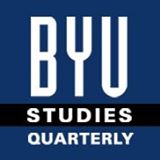BYU Studies

Keywords
Mormon studies, book review, apostleship, Gospel of Judas, Judas
Abstract
Among the various apocryphal titles mentioned by the early Church fathers is the Gospel of Judas, a Coptic version of which was recently found in Egypt, purportedly taken from a limestone box together with several other texts during an illegal raid of a burial cave in 1978. Before its first publication by the National Geographic Society in 2006, it was apparently sold, stolen, recovered, sold again, then again, frozen, thawed, and repossessed, such that by the time the work of conservation finally began in 2001, the pages of the Gospel of Judas had been broken into numerous pieces, some of which have probably been lost forever. Thanks to the efforts of Rodolphe Kasser, Florence Darbre, and Gregor Wurst, the surviving fragments (about 85 percent of the text) were conserved and reassembled.
In April 2006, a transcription of the Coptic text of the Gospel of Judas was posted on National Geographic's web page. Based on this "preliminary edition," National Geographic published an English translation of the Gospel of Judas by Rodolphe Kasser, Marvin Meyer, and Gregor Wurst, in collaboration with Francois Gaudard. The book, which also features commentary by Kasser, Meyer, and Wurst, as well as by best-selling author Bart Ehrman, sold well and quickly due to its claim that in the Gospel of Judas, to cite Ehrman's commentary, Judas is portrayed "not as the evil, corrupt, devil-inspired follower of Jesus, who betrayed his master" but "instead Jesus' closest intimate and friend, the one who understood Jesus better than anyone else, who turned Jesus over to the authorities because Jesus wanted him to do so." If it were not for this claim, the Gospel of Judas would not have received much attention. But as it was, the text became a topic of conversation for several months in various settings, including a panel discussion by a few BYU professors on April 15, 2006. Since the papers prepared in conjunction with that panel discussion were published in BYU Studies later that year, its readers may be interested to know that the work of the National Geographic team has also faced mounting criticism from scholars like April DeConick (best known for her work on the Gospel of Thomas).
Recommended Citation
DeConick, April D. and Adamson, Grant
(2009)
"The Thirteenth Apostle: What the Gospel of Judas Really Says,"
BYU Studies: Vol. 48:
Iss.
1, Article 9.
Available at:
https://scholarsarchive.byu.edu/byusq/vol48/iss1/9
